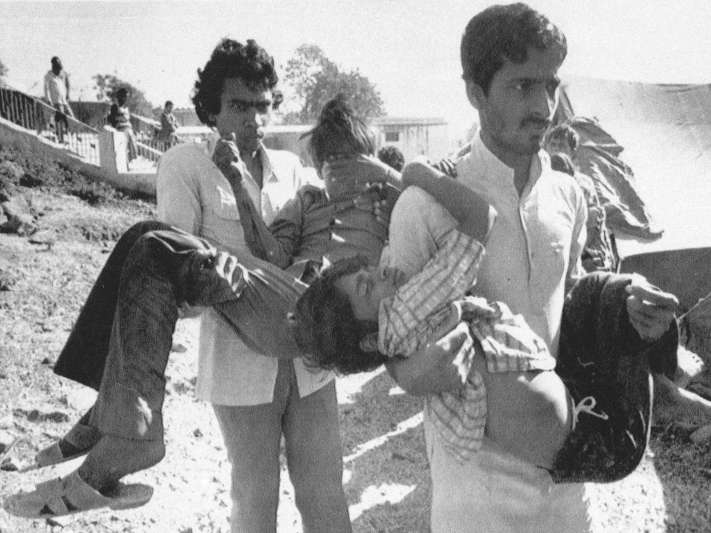
bhopal-gas-tragedy
It’s been long 32 years since the Bhopal tragedy took place on the night of 2-3 December in Bhopal [M.P] 1984 but the scars still remains fresh on the people who suffered huge loss in the tragedy. Bhopal gas tragedy was a gas leak incident in India which is considered as one of the world’s worst industrial disaster, even worse than the Chernobyl disaster in the US. A huge amount of toxic gas named methyl isocyanate [MIC] got leaked from the Union Carbide India Limited [UCIL] pesticide plant in Bhopal suffocating and gradually killing a lot of people in their sleep. The immediate death toll was estimated to be 2,295 but various reports state different numbers. The Indian Council of Medical Research (ICMR) was forbidden to publish health effect data until 1994.
A total of 36 wards were marked by the authorities as being “gas affected”, affecting a population of 5,20,000 in and around the Bhopal city. Of these, 2,00,000 were below 15 years of age, and 3,000 were pregnant women. Even though the immediate death toll was stated to be 2,25,93,928 deaths had been officially certified. Ingrid Eckerman estimated 8,000 died within the next two weeks after the gas leak incident. The government of Madhya Pradesh confirmed a total of 3,787 deaths related to the gas release.
Later, the affected area was expanded to include 7,00,000 citizens. A government affidavit in 2006 stated the leak caused 5,58,125 injuries including 38,478 temporary partial injuries and approximately 3,900 severely and permanently disabling injuries.
Imagine kissing your family goodnight and not waking up to see them alive. This is exactly what happened in Bhopal where people went into a dilemma when a few of them woke up to see their families dead while others never woke up. Even today, a lot of genetic defects are seen in the generation of people who were born immediately after the Bhopal disaster until the next 20 years. People of Bhopal have suffered a lot since then and still the ill effects of the MIC gas can be seen in the Bhopal civilians as they were genetically affected by the disaster.
Now owned by Dow Chemical Company, Union Carbide maintains a website dedicated to the tragedy and claims that the incident was the result of sabotage, stating that sufficient safety systems were in place and operative to prevent the intrusion of water. Even though a lot of safety measures are being taken since this disaster took place, a little bit of rules and maintenance, just a little bit of responsibility, could have prevented the gas leak. All we hope is no such incident repeat in future and that government takes care that every industrial plant follows all the rules regarding safety and control.
This post was last modified on 03/12/2016 2:43 pm
Activists of Osmania University Joint Action Committee (JAC) stormed and attacked the house of Allu…
District Collector M N Harendra Prasad has said that all the officials concerned should work…
It's the end of the week which means no work pressure and ample time to…
Araku Valley and Vanjangi, both the places have their unique fanbases in Visakhapatnam! During winter,…
Vizag is a paradise for food lovers. Every corner of the city has something special…
Rainy days bring with them the perfect excuse to curl up with a cup of…
Leave a Comment